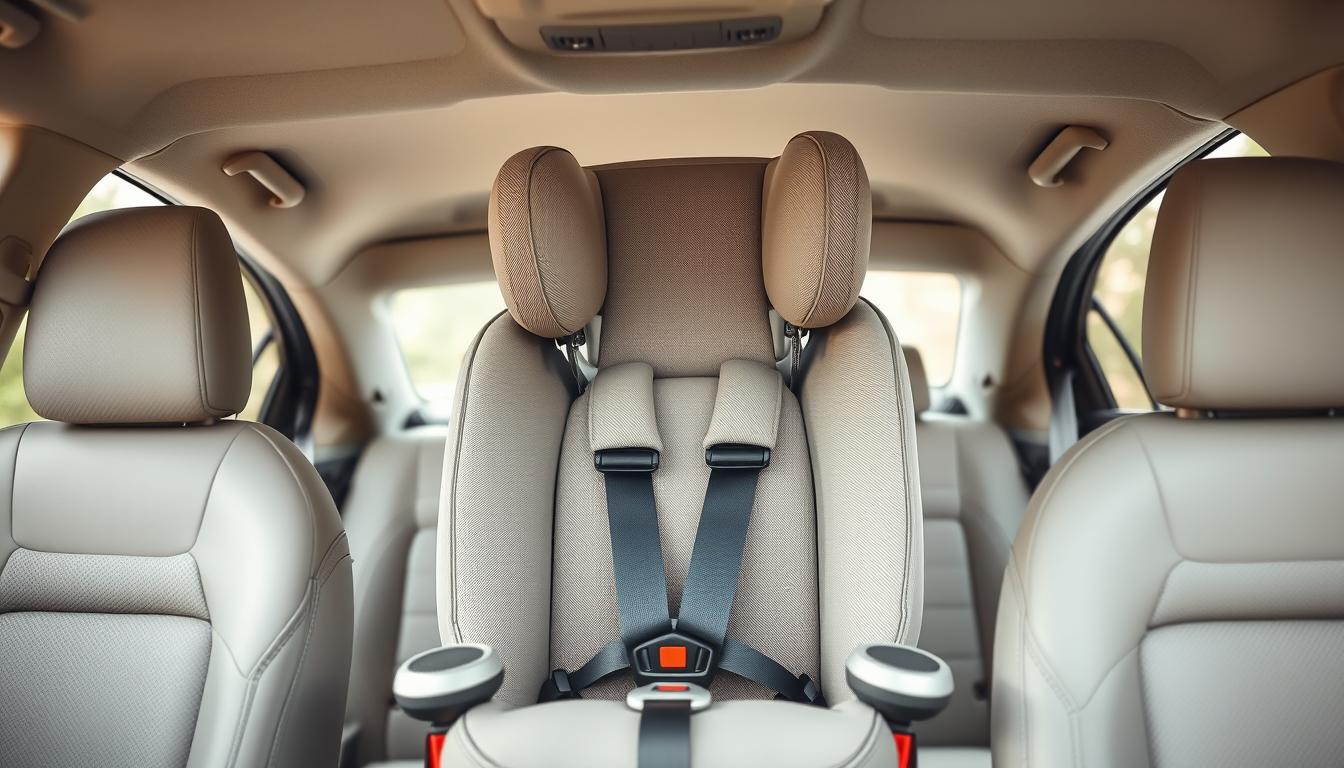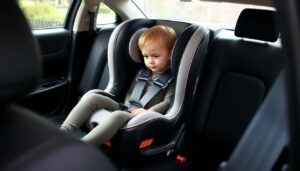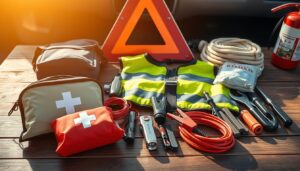Choosing the Right Car Seat for Your Child
Did you know that properly installed child restraints reduce fatal injury risk by 71% for infants and 54% for toddlers? This startling statistic highlights why selecting the correct protection system is one of the most critical decisions families make.
Finding the perfect solution involves balancing multiple factors. You’ll need to consider safety innovations, comfort features, and how the product fits both your little one and your vehicle. Modern options offer more than just basic protection—they’re designed with busy families in mind.
This comprehensive guide covers all major categories from infant carriers through booster models. We’ll help you understand which choices work best for each developmental stage. You’ll learn about top-rated products, installation techniques, and how to compare features.
With so many choices available, the selection process can feel overwhelming. Our breakdown will provide everything you need to make an informed decision. We include specific recommendations with real crash test data and honest assessments of each model’s strengths.
Key Takeaways
- Proper child restraints dramatically reduce injury risk in accidents
- The selection process involves balancing safety, comfort, and fit
- Different stages of childhood require specific types of protection
- Modern options include convenient features for busy families
- This guide covers installation techniques and product comparisons
- Real crash test data helps inform your purchasing decision
- Understanding weight and height limits ensures proper protection
Introduction: The Importance of Car Seats in Child Safety
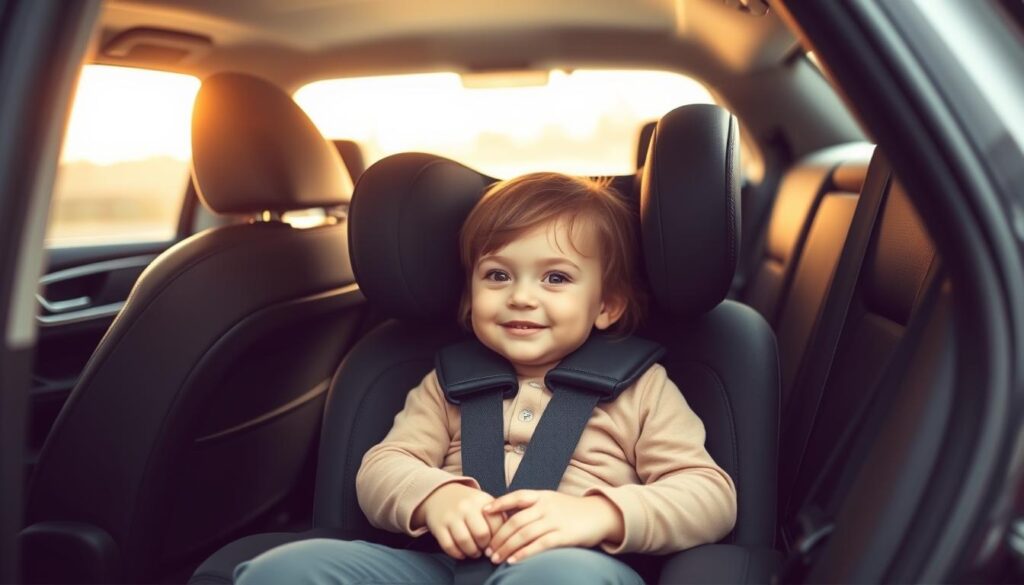
Every journey with little ones requires reliable protection that standard vehicle restraints simply cannot provide. Accidents happen unexpectedly, even to cautious drivers. A properly installed child restraint system becomes the first line of defense during collisions.
Young passengers have developing bodies with special needs. Their neck and spine structures are particularly fragile. Adult seat belts are designed for much larger bodies, making them unsafe for small children.
Specialized car seat engineering addresses these vulnerabilities. The design distributes crash forces across the entire shell. This protects delicate bones and muscles from whiplash injuries.
Rear-facing models offer exceptional protection for infants. They cradle the child’s entire back during sudden stops. This positioning minimizes stress on developing neck muscles.
Beyond safety, these restraint systems provide comfort for children. They create a snug space designed for small bodies. Kids can rest comfortably while staying securely in place.
Choosing the right car seat and installing it correctly is crucial for parents. Proper use maximizes the protective benefits. Staying informed about current safety standards ensures optimal protection for young passengers.
Key Safety Features and Innovations in Car Seats
Today’s top-rated child restraint products combine crash-tested safety with thoughtful design elements for busy families. Manufacturers work with certified labs like MGA Research to ensure rigorous testing standards.
Crash Test Ratings and Safety Standards
Independent testing provides objective data on how restraints perform in collisions. Sensors measure G-forces on crash test dummies during impact simulations.
This data helps identify products with superior protection margins. Look for side-impact systems that cushion against lateral collisions.
| Safety Feature | Purpose | Key Benefit |
|---|---|---|
| Adjustable Harness | Proper child positioning | Maintains secure fit during growth |
| Side-Impact Protection | Lateral collision safety | Extra cushioning for side impacts |
| LATCH System | Simplified installation | Reduces installation errors |
Convenience Features for Busy Parents
Modern designs include rotating bases for easier child loading. These features prevent back strain during daily use.
Non-rethread harness systems adjust quickly as children grow. Machine-washable covers and integrated storage add practical benefits.
These innovations make proper installation and daily use much simpler. They address real parenting challenges while maintaining top safety standards.
Infant Car Seats: Top Picks for Newborns
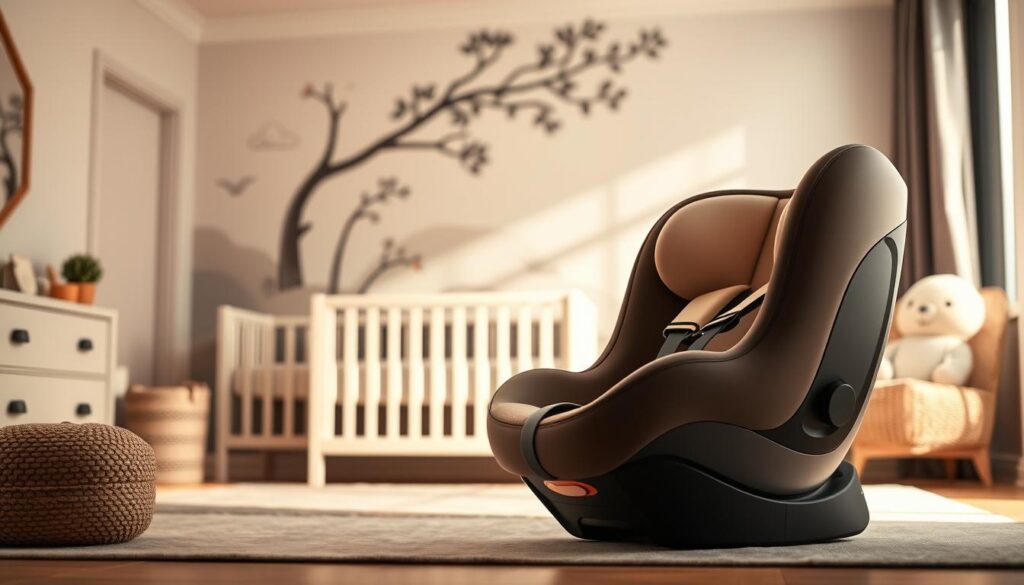
Infant car seats provide the essential foundation for protecting your baby during those crucial early months of travel. These rear-facing units are specifically designed for newborns up to approximately one year old.
They typically accommodate weights from 4 to 35 pounds and heights up to 32 inches. The characteristic bucket design creates a snug, nest-like environment perfect for supporting delicate development.
Comfort and Protection in Early Months
The cozy bucket shape cradles your infant’s head, neck, and spine during their earliest development. This design distributes impact forces evenly across the entire shell.
Top-rated options include several standout models:
- Nuna Pipa RX offers superior crash analysis with a lightweight 8.5-pound carrier
- Britax Willow S provides excellent value with easy ClickTight installation
- Romer Juni features the easiest installation and largest canopy in its class
- Evenflo Shyft Dualride includes an integrated stroller frame for urban families
Stroller Integration Options
Many families choose travel systems that allow seamless movement from vehicle to sidewalk. These combinations let you transfer a sleeping baby without disturbance.
Stroller compatibility is a key consideration for busy parents. The right system turns car rides into smooth stroller walks instantly.
When selecting an infant car seat, prioritize crash test performance, carrier weight, and installation ease. Ensure the model works from your baby’s birth weight and fits your lifestyle needs.
Convertible Car Seats: Versatility for Growing Kids

When your child outgrows their infant carrier, a convertible model becomes the next logical step. These versatile units are designed to grow with your little one, offering years of protection.
Unlike portable infant carriers, a convertible car seat stays installed in your vehicle. It might be bulkier, but its ability to adapt provides exceptional long-term value for families.
Rear-Facing and Forward-Facing Modes
The core feature of any convertible is its dual-mode design. It starts in a rear-facing position for optimal infant and toddler safety.
As your child grows, it converts to a forward-facing restraint. Some advanced models even transform into a booster, creating a true 3-in-1 solution that lasts for years.
Rotating and 3-in-1 Designs
One of the biggest innovations is the rotating convertible. This design swivels toward the door, making it much easier to secure your child.
It eliminates awkward bending and reaching. This feature is a huge help for parents with busy schedules or back concerns.
Here’s a comparison of top-rated convertible options to help you decide:
| Model | Key Feature | Rear-Facing Weight | Forward-Facing Weight |
|---|---|---|---|
| Graco 4Ever DLX | Best Overall | 4-40 lbs | 22-65 lbs |
| Romer Veni | Easiest Installation | 5-50 lbs | 22-65 lbs |
| Graco Extend2Fit 3-in-1 | Extended Legroom | 4-50 lbs | 22-65 lbs |
| Graco SlimFit3 LX | Narrowest Fit | 5-40 lbs | 26.5-65 lbs |
| Chicco Fit 360 | 360-Degree Rotation | 4-40 lbs | 26.5-65 lbs |
Choosing the right convertible depends on your vehicle size, budget, and specific needs. A rotating model offers incredible daily convenience, while a narrow design is perfect for fitting multiple restraints.
Booster Car Seat Options: Balancing Comfort and Safety
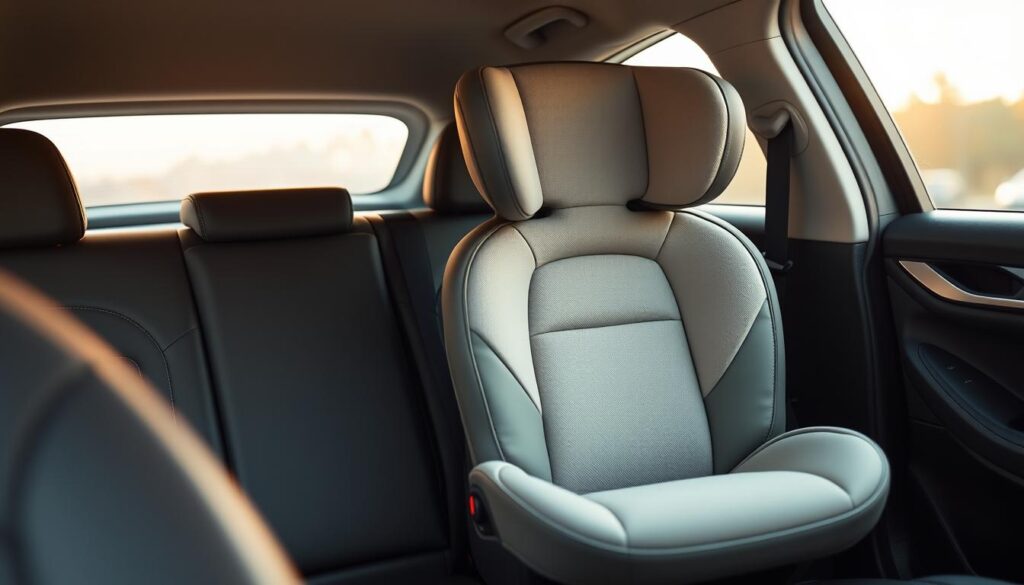
The transition from harnessed restraints to proper seat belt positioning marks an important milestone in child passenger safety. These booster solutions lift children up so vehicle belts fit correctly across their strongest body areas.
This positioning ensures the lap belt rests across the upper thighs and pelvis. The shoulder belt should cross the chest properly rather than the neck.
High-Back vs. Backless Models
High-back boosters provide crucial head and neck support with side-impact protection. They work well in vehicles without adequate head restraints.
Backless models offer excellent portability and fit easily in most vehicles. They’re ideal for carpools and families needing multiple restraint solutions.
The Nuna AACE delivers superior crash test performance with a narrow 16-inch width. This high-back booster converts to backless mode for children 40-110 pounds.
For budget-conscious families, the Chicco KidFit Zip Air Plus 2-in-1 features lounge-style padding and easy LATCH installation. It provides excellent crash protection analysis.
The Peg Perego Viaggio Flex 120 offers impressive adjustability for growing kids up to 120 pounds. Its expandable wings accommodate different body types comfortably.
Most children need booster protection until they reach 4’9″ tall, typically around age 8-12. Harness booster options extend five-point harness use before transitioning to belt positioning.
Car Seat Safety and Features
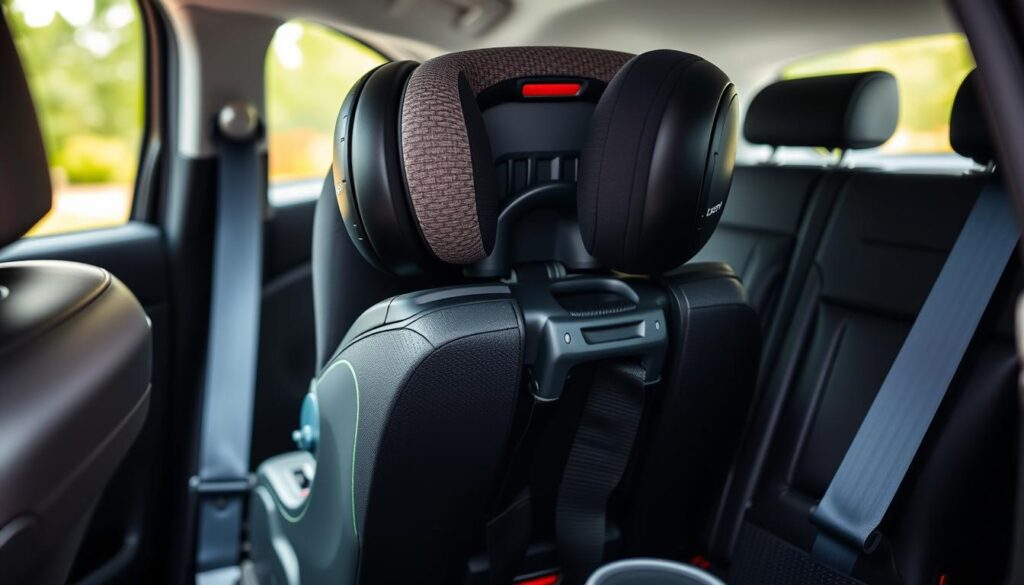
Getting your child’s protection system installed correctly is the most important step for safety. Modern restraints offer helpful features that make this process much simpler for parents.
Leveraging LATCH and Installation Aids
The LATCH system (Lower Anchors and Tethers for Children) provides a standardized way to secure child restraints. This system uses lower anchor connectors between vehicle cushions and a top tether behind the seat.
You should choose either LATCH or your vehicle’s seat belt for installation. Using both methods doesn’t improve safety and can actually cause problems.
Most LATCH systems have a 65-pound weight limit for the child plus restraint combined. After reaching this limit, you must switch to seat belt installation.
| Installation Method | Best For | Key Advantage |
|---|---|---|
| LATCH System | Vehicles made after 2002 | Standardized easy installation |
| Seat Belt | Older vehicles or heavier children | No weight restrictions |
| ClickTight Systems | Britax and Romer models | Automatic belt locking |
| Rigid LATCH Connectors | Premium models | Stable attachment without tightening |
Built-in lock-off features and rigid connectors make installation more secure. Studies show nearly half of all restraints are installed incorrectly, reducing their protective ability.
Always read both your restraint manual and vehicle owner’s manual. Consider having your installation checked by a certified Child Passenger Safety Technician for peace of mind.
How to Properly Install Your Car Seat
A secure installation is your child’s primary shield during travel, making proper setup non-negotiable. Getting this right ensures your chosen restraint performs as designed during unexpected events.
Step-by-Step Installation Techniques
Start by selecting the ideal vehicle position. The center rear spot offers maximum distance from potential impact zones. Either side position works well if the center doesn’t fit your restraint system.
Modern installations typically use either LATCH anchors or your vehicle’s seat belt system. Choose one method exclusively—combining them can compromise safety. Each approach requires specific techniques for optimal security.
| Installation Method | Best Use Case | Key Advantage |
|---|---|---|
| LATCH System | Standard installations | Simplified connection process |
| Seat Belt | Older vehicles | Universal compatibility |
| ClickTight Mechanism | Quick installations | Automatic locking feature |
| Rigid LATCH | Premium models | Stability without adjustment |
For rear-facing units, angle adjustment is critical. Newborns need approximately 45 degrees of recline to maintain open airways. Most products include visual indicators for proper positioning.
Common Installation Pitfalls to Avoid
Always perform the crucial one-inch test after installation. Grasp the restraint near its base and attempt movement. If it shifts more than one inch, additional tightening is necessary.
Harness positioning requires regular attention as children grow. Straps should sit at or below shoulders for rear-facing mode. The chest clip must align with armpit level for proper security.
Schedule monthly checks to ensure ongoing proper fit. Children’s growth can quickly change harness requirements. Consistent verification maintains optimal protection through every developmental stage.
Product Roundup: Comparing Models, Features, and Prices
Finding the perfect child restraint involves balancing your budget with the advanced features that matter most for safety and convenience. This comparison helps you see the top choices at a glance.
We’ve organized the best options by category to simplify your search. You can quickly identify which models deserve consideration for your child’s current stage.
Budget-Friendly Models vs. Premium Options
Higher cost doesn’t always mean better performance. Some reasonably priced models offer outstanding value.
The Graco 4Ever DLX convertible is a great example. It delivers top crash analysis without a premium price tag.
For families prioritizing top-tier performance, premium choices exist. The Nuna Pipa RX infant model justifies its higher price with best-in-class crash test results and a very light carrier weight.
The best child restraint is the one you will use correctly every single trip.
Specialized features can also influence the final cost. Rotating bases and integrated stroller frames add convenience but increase the investment.
| Category | Budget Pick | Premium Pick | Key Justification |
|---|---|---|---|
| Infant | Britax Willow S | Nuna Pipa RX | Excellent value vs. lightest weight |
| Convertible | Graco Extend2Fit 3-in-1 | Romer Veni | Great crash analysis vs. easiest installation |
| Booster | Chicco KidFit Zip Air Plus | Nuna AACE | Better crash scores vs. best sensor readings |
To see these options in person, consider visiting a specialty retailer like Kidsland in Los Angeles. They offer a large selection from premier brands for hands-on comparison.
Remember, every model listed meets strict federal safety standards. Your final choice should fit your child, your vehicle, and your budget perfectly.
Choosing the Right Car Seat for Your Child’s Age and Size
Selecting the perfect child restraint system depends more on physical development than calendar age. Children grow at different rates, so one product designed for a specific stage might not fit every child equally well.
Key Considerations for Every Stage
Follow these guidelines to match protection to your child’s current needs. Always prioritize manufacturer specifications over arbitrary milestones.
Infant stage covers birth to approximately 12 months. Babies need rear-facing units with extra cushioning for delicate anatomy. Keep infants in this position until they reach the maximum height or weight limit.
Toddler years benefit from extended rear-facing protection. Most safety experts recommend this position until at least age two. Ideally, continue until children exceed the convertible product’s rear-facing limits.
The forward-facing harnessed stage typically spans ages 2-5. Children use a five-point harness system after outgrowing rear-facing limits. Remain in this configuration as long as possible before booster transition.
Booster seats serve children approximately 4-8 years old. These products position vehicle belts correctly across stronger body areas. High-back models provide crucial head and neck support.
Children reach seat belt readiness around ages 8-12. They should be about 4’9″ tall with proper belt fit across chest and thighs. The “rule of fours” helps parents determine transition timing accurately.
Always check height and weight limits before moving to the next stage. Ensure proper harness snugness and belt positioning for optimal safety at every age.
Conclusion
Ultimately, safeguarding your little ones during travel comes down to matching the right product with your specific needs. The ideal choice balances your child’s development stage, vehicle compatibility, and family lifestyle requirements.
This decision represents one of the most significant safety investments parents can make. Proper selection and installation dramatically reduce injury risks for children. With numerous options available, today’s car seats offer advanced protection features.
Remember that the perfect car seat fits three key criteria: appropriate sizing, secure vehicle installation, and practical daily use. While the selection process may seem complex, this guide provides the essential knowledge for confident decision-making.
Your child’s wellbeing deserves nothing less than optimal protection. Visit Kidsland to explore quality safety solutions and ensure peace of mind during every journey. The right choice brings invaluable comfort to both parents and their precious passengers.
FAQ
What is the difference between an infant car seat and a convertible car seat?
How do I know when my child is ready for a booster car seat?
Are rotating convertible car seats worth the investment?
What does the LATCH system do for installation?
Can I use a car seat stroller combo for my newborn?
What are the main safety features I should look for?

Eduard Kingly is a travel and lifestyle content creator with a focus on personal development and education. He combines firsthand travel experiences with research-driven insights to guide readers in discovering new places, building better habits, and pursuing meaningful learning.

